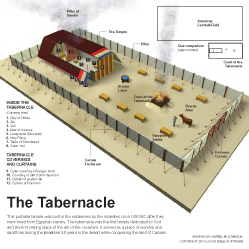4:1 seven women The male population will be severely reduced, resulting in a shortage of eligible husbands. The women insist they can provide for themselves; they may desire a husband for protection or to avoid the stigma of widowhood.
4:2 On that day Previously in Isaiah, “that day” referred to the day of judgment (see 3:7; 4:1). Here, it refers to the day of ultimate restoration in the messianic age.
the branch of Yahweh A metaphor referring to the Messiah, as indicated by Jer 23:5; 33:15 and Zech 6:12. In Zech 3:8, God’s heir—being the messianic branch (which can also be rendered as “sprout” or “shoot”)—is further identified as Yahweh’s “servant.” This links the messiah to the servant imagery of Isa 40–55 (compare 11:1 for a similar metaphor).
the survivors of Israel The fate of Judah’s survivors is a key theme of Isaiah (see Isa 1:9 and note; 10:20).
4:3 He who is left in Zion and he who remains in Jerusalem Refers to the remnant after the act of judgment. That the entire remnant is now “holy” suggests the future fulfillment of a messianic Zion, not the near fulfillment of a rebuilt and repopulated city. This also reinforces the identification of the “branch” as the Messiah (see note on v. 2).
is now “holy” suggests the future fulfillment of a messianic Zion, not the near fulfillment of a rebuilt and repopulated city. This also reinforces the identification of the “branch” as the Messiah (see note on v. 2).
everyone written for life This reference suggests a future period of total reconciliation between God and His people. The reference also indicates that the names of the holy remnant have been recorded. This implies the existence of a divine record of who will be saved—a Book of Life. Such a book is alluded to in Exod 32:32–33 and Dan 12:1.
4:4 the daughters of Zion A reference to Jerusalem, using the daughters rebuked in Isa 3:16 as representative of the city’s inhabitants. See note on 1:8.
by a spirit of judgment This phrase is parallel to the phrase variously rendered “by a spirit of burning” or “by a spirit of fire”; they function together to describe Yahweh’s judgment by fire.
a spirit of burning Fire is a theological symbol associated with judgment, purification, and divine presence. Divine judgment often comes by a purifying fire—as in 1:25, where the cleansing of sin by judgment is compared to the removal of impurity in the smelting process (compare Mal 3:2–5). Fire symbolizes Yahweh’s presence in Isa 4:5, so the image of burning here bridges the related associations of divine judgment and presence.
4:5 assembly Refers to God’s presence during their sacred gatherings. The Hebrew term used here refers to the act of calling God’s people together, but came to be used for the gathering itself as well.
flaming fire by night God’s presence in Zion will be as it was with Israel in the wilderness (see Exod 13:21–22; 40:34–38; Num 9:15–23): He will dwell visibly in their midst.

|
About Faithlife Study BibleFaithlife Study Bible (FSB) is your guide to the ancient world of the Old and New Testaments, with study notes and articles that draw from a wide range of academic research. FSB helps you learn how to think about interpretation methods and issues so that you can gain a deeper understanding of the text. |
| Copyright |
Copyright 2012 Logos Bible Software. |
| Support Info | fsb |
 Loading…
Loading…


